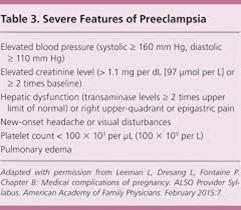A nurse is planning to teach an educational session about chlamydia. Which of the following information should the nurse plan to include?
Chlamydia is treated using antiviral medications.
Clients can resume intercourse once treatment has started.
A chlamydia infection is often asymptomatic in female clients.
Female clients who are at risk for chlamydia should be screened every 2 years.
The Correct Answer is C
Choice A rationale:
Chlamydia is a bacterial infection, so it is treated with antibiotics, not antiviral medications.
Choice B rationale:
Clients should abstain from sexual intercourse until the treatment course is completed to prevent transmission.
Choice C rationale:
Chlamydia infections are often asymptomatic in both males and females, which can lead to undiagnosed and untreated infections. Routine screening is important to detect and treat infections early.
Choice D rationale:
The recommended frequency for chlamydia screening in female clients at risk is annually, not every 2 years.
Nursing Test Bank
Naxlex Comprehensive Predictor Exams
Related Questions
Correct Answer is C
Explanation
Choice A rationale:
Ankle swelling can be a common symptom of pregnancy and is not necessarily indicative of a complication.
Choice B rationale:
Gums can become more sensitive during pregnancy, leading to bleeding while brushing teeth. This finding is common and not necessarily indicative of a complication.
Choice C rationale:
Constant pain in the middle of the upper abdomen can be a sign of preeclampsia, a serious pregnancy complication that requires prompt medical attention.
Choice D rationale:
Feeling dizzy when lying flat on the back (supine hypotension) can be a common discomfort during pregnancy due to pressure on the vena cava. However, it does not necessarily indicate a complication in this context.

Correct Answer is B
Explanation
Choice A rationale:
A fasting blood glucose level of 96 mg/dL is within a normal range and is not typically associated with carbidopa/levodopa therapy.
Choice B rationale:
Hemoglobin levels of 10 g/dL may indicate anemia, which can exacerbate symptoms in clients with Parkinson's disease and affect the effectiveness of carbidopa/levodopa.
Choice C rationale:
A platelet count of 200,000/mm3 is within a normal range and is not typically associated with carbidopa/levodopa therapy.
Choice D rationale:
A blood urea nitrogen (BUN) level of 10 mg/dL is within a normal range and is not typically associated with carbidopa/levodopa therapy.
Whether you are a student looking to ace your exams or a practicing nurse seeking to enhance your expertise , our nursing education contents will empower you with the confidence and competence to make a difference in the lives of patients and become a respected leader in the healthcare field.
Visit Naxlex, invest in your future and unlock endless possibilities with our unparalleled nursing education contents today
Report Wrong Answer on the Current Question
Do you disagree with the answer? If yes, what is your expected answer? Explain.
Kindly be descriptive with the issue you are facing.
